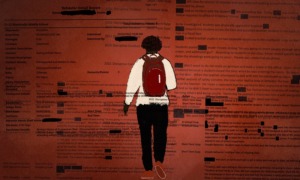Shhhhh.
That’s the sound of juvenile justice advocates as they watch Congress tiptoe toward reauthorizing the nation’s juvenile justice programs, after seven years of sometimes screaming debate.
The reauthorization of the U.S. Office of Juvenile Justice and Delinquency Prevention (OJJ) would largely maintain the status quo – an amazing feat considering what happened when three previous Congresses tried to pass similar legislation.
Most infamous was the Consequences for Juvenile Offenders Act of 1999, which – coming in the wake of several school shootings – made front-page headlines nationwide as Republicans and Democrats brawled over 45 amendments dealing with issues such as gun control and trying juveniles as adults.
This time, as juvenile crime has faded from public view and the country focuses on terrorism, Congress appears ready to reauthorize the OJJ for the first time since it expired on Sept. 30, 1996. The office has received authority to keep running each year through the congressional appropriations process.
Members of a House-Senate conference committee agreed last month to provisions from a House-approved reauthorization bill (HR 1900), which would become part of a broader bill (HR 2215) to reauthorize the U.S. Department of Justice.
Conference members also agreed to add legislation (HR 863) to provide additional juvenile justice grants to states that agree to implement a system of graduated sanctions for young offenders.
The legislation is popular among many youth policy groups, in large part because it changes current law so little.
“It’s pretty close to current law, which in our view is a significant improvement over the original bill,” said Tim Briceland-Betts, senior government affairs associate for the Child Welfare League of America.
“This is essentially a positive outcome for kids,” said Jill Ward, director of Violence Prevention and Youth Development at the Children’s Defense Fund, and co-chair of the Juvenile Justice and Delinquency Coalition, a consortium of more than 80 national nonprofits (including the CWLA).
The bill would consolidate several grant programs – such as gang prevention and mentoring – into a larger block grant, giving states more flexibility in using the federal funds. States would get block grants based on the size of their youth population and youth crime problem.
States could use the funds for mentoring and educational activities, probation services, alcohol and drug abuse treatment and other programs.
The conference committee agreement retains a separate funding stream for local and community delinquency prevention programs – Title V grants under the old authorizing language. In earlier versions of the legislation, Title V grants had been consolidated into a block grant.
“We were really pleased to see a restoration of that,” Ward said. “It’s all about prevention.”
The agreement to separate the Title V funding from the block grants illustrates a fundamental difference between Democrats and Republicans over how federal funds should be disbursed. Republicans favor the flexibility afforded by block grants over the restrictions of dedicated funding.
Democrats worry that program areas (such as mentoring) that lack dedicated funding will lose out to other programs competing for limited resources from a single block grant.
That’s the new economic reality that some local agencies will face.
“I’d hate to see an organization like mine that serves a semi-rural population not be able to compete with programs in areas like San Francisco,” said Dan Nguyen-Tan, president of the board of Big Brothers Big Sisters of Butte County in Chico, Calif. The organization recently won a three-year, $220,000 grant through the federal juvenile mentoring program.
The bill also would retain and modify the four requirements for states to receive federal juvenile justice funds. States must agree to: not lock up status offenders; keep youths out of the “sight and sound” of adult prisoners if a facility houses both youths and adults; remove juveniles from adult jails within 24 hours of arrest; and track the number of detained minority juveniles.
The agreement calls for states to track the number of minority youth who come into contact with the justice system, and drops a provision that would have let parents choose to have their children held for up to 20 days in adult facilities.
It also modifies a rule governing how long a juvenile can be held in a rural facility with adults before an initial court appearance, from the old standard of 24 hours to 48 hours.
The House passed the legislation by voice vote in September 2001, after overwhelming bipartisan approval in the House Education and the Workforce Committee. The bill was co-sponsored by Reps. James C. Greenwood (R-Pa.) and Robert C. Scott (D-Va.).
The Senate did not consider juvenile justice legislation during the 107th Congress, but Senate rules permit conference committees to add relevant provisions to other bills – in this case, the Justice Department appropriation.
By considering the reauthorization bill as an amendment to a House-Senate conference report, lawmakers were able to avoid the volume and type of amendments that doomed previous legislation. They also seemed to be in a more cooperative mood this time around.
“Both Democrats and Republicans in the House wanted to get this done,” Ward said.
Despite the consensus reached by the two chambers over the juvenile-related bills, problems with the underlying Justice bill and other legislation added to the conference report left their passage uncertain in late September.
























